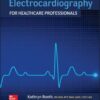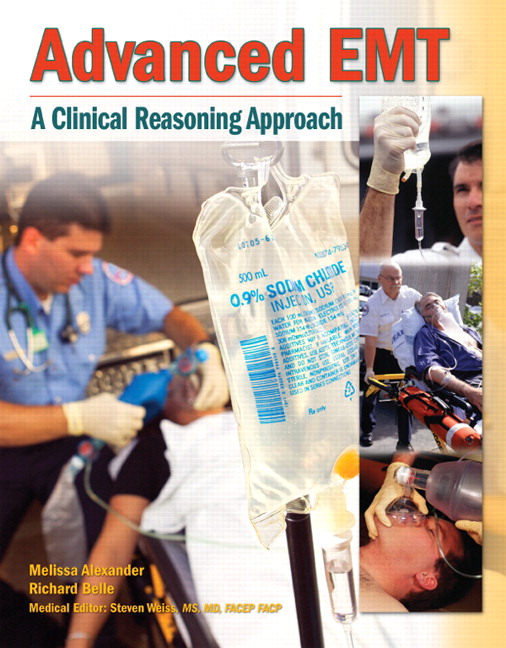Test Bank for Advanced EMT: A Clinical-Reasoning Approach, 1st Edition, Melissa R. Alexander, Richard Belle
$35.00
Test Bank for Advanced EMT: A Clinical-Reasoning Approach, 1st Edition, Melissa R. Alexander, Richard Belle,,,
You will receive this product immediate after placing the order
Test Bank for Advanced EMT: A Clinical-Reasoning Approach, 1st Edition, Melissa R. Alexander, Richard Belle,,,
You are buying Test Bank. A Test Bank is collection of test questions tailored to the contents of an individual . Test bank may contains the following types of questions: multiple choice, true/false, fill in the blank, matching, essay/short answer, and free-response questions. Please download sample for your confidential.
Table of Contents
SECTION 1: PREPARING FOR ADVANCED EMERGENCY MEDICAL TECHNICIAN PRACTICE
Chapter 1: Introduction to Advanced Emergency Medical Technician Practice
Chapter 2: Emergency Medical Services, Health Care, and Public Health Systems
Chapter 3: Workforce Wellness and Personal Safety
Chapter 4: Ethical and Medical/Legal Considerations in Advanced EMT Practice
Chapter 5: Ambulance Operations and Responding to EMS Calls
Chapter 6: Communication and Teamwork
SECTION 2: HUMAN DEVELOPMENT, HEALTH, AND DISEASE
Chapter 7: Medical Terminology
Chapter 8: Human Body Systems
Chapter 9: Life-Span Development and Cultural Considerations
Chapter 10: Pathophysiology: Selected Impairments of Homeostasis
SECTION 3: PHARMACOLOGY
Chapter 11: Pharmacology
Chapter 12: Medication Administration
Chapter 13: Medications
SECTION 4: ASSESSMENT AND INITIAL MANAGEMENT
Chapter 14: General Approach to Patient Assessment and Clinical Reasoning
Chapter 15: Primary Assessment
Chapter 16: Airway Management, Ventilation, and Oxygenation
Chapter 17: Resuscitation: Managing Shock and Cardiac Arrest
Chapter 18: Vital Signs and Monitoring Devices
Chapter 19: History Taking, Secondary Assessment, and Reassessment
SECTION 5: MEDICAL EMERGENCIES
Chapter 20: Respiratory Emergencies (Sample Chapter)
Chapter 21: Cardiovascular Emergencies
Chapter 22: Neurological Disorders
Chapter 23: Endocrine Disorders
Chapter 24: Abdominal Pain and Gastrointestinal Disorders
Chapter 25: Renal, Genitourinary, and Gynecologic Disorders
Chapter 26: Hematological Disorders
Chapter 27: Immunological Disorders
Chapter 28: Infectious Illnesses
Chapter 29: Non-traumatic Musculoskeletal and Soft-Tissue Disorders
Chapter 30: Disorders of the Eye, Ear, Nose, Throat, and Oral Cavity
Chapter 31: Mental Illness and Behavioral Emergencies
Chapter 32: Toxicological Emergencies
SECTION 6: TRAUMA
Chapter 33: Trauma Systems and Incident Command
Chapter 34: Mechanisms of Injury, Trauma Assessment, and Trauma Triage Criteria
Chapter 35: Soft-Tissue Injuries and Burns
Chapter 36: Musculoskeletal Injuries
Chapter 37: Head, Brain, Face, and Neck Injuries
Chapter 38: Thoracic Trauma
Chapter 39: Abdominal Trauma
Chapter 40: Spine Injuries
Chapter 41: Environmental Emergencies
Chapter 42: Multisystems Trauma and Trauma Resuscitation
SECTION 7: SPECIAL PATIENT POPULATIONS
Chapter 43: Obstetrics and Care of the Newborn
Chapter 44: Pediatric Emergencies
Chapter 45: Geriatrics
Chapter 46: Patients with Special Challenges
SECTION 8: RESCUE AND SPECIAL OPERATIONS
Chapter 47: Rescue Operations and Vehicle Extrication
Chapter 48: Hazardous Materials
Chapter 49: Response to Terrorism and Disasters
APPENDICES
Appendix 1: Endotracheal Intubation
Appendix 2: Advanced ECG Recognition
Appendix 3: Adult Intraosseous Infusion
Appendix 4: Additional Emergency Medications
ANSWER KEY
GLOSSARY
INDEX











Reviews
There are no reviews yet.